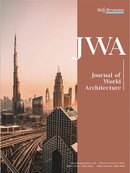Abstract
This study aims to optimize energy consumption by modifying the train’s maximal speed and coasting velocity. The methods used in the simulation are brute force and genetic algorithm (GA). The introduction briefly introduces the aim and objectives of the study, as well as the scope and the methodology. The following section gives an overview of the current rail transit development and the existing issues. Despite the rapid development of rail transit and its successful operation, energy consumption is a major issue. The methodology of brute force and genetic algorithm is then introduced. The exact algorithm of the two methods in MATLAB is explained so as to make preparations for the latter simulation optimization. The results from the brute force and genetic algorithm methods are obtained and compared for data analysis. The driving strategy for using STS (Single Train Simulator) is then optimized for an advanced modification. By inserting more values in the code, an optimal speed profile is obtained, and the energy saving target is achieved. Overall, the energy consumption of the studied line could be decreased by optimizing the maximal speed of different sections between the stations and the coasting velocity. However, influencing factors such as service and infrastructure, application of acceleration, and braking power should also be considered as improvements in future studies.
References
2019, What Are the Energy-saving Technologies of Urban Subway. Rail Transit Network, November 13, 2019. http://www.rail-transit.com/photo/show.php?itemid=88
Chengdu Metro, 2020, Why Do You Think of Chengdu Metro When You Talk About Low-Carbon Life. July 4, 2020. https://2ly4hg.smartapps.cn/pages/article/article?_trans_=010005_wxhy_shw&articleId=405652287&authorId=99960714&spm=smbd.content.share.0.1615449768116znRUZaa&_swebfr=1
Camara MB, Gualous H, Gustin F, et al., 2007, Experimental Study Buck-Boost Converters with Polynomial Control Strategy for Hybrid Vehicles Applications. International Review of Electrical Engineering (IREE), 2(4): 1827–6660.
Bejaoui F, Mechmeche C, Ben Hadj Braiek N, et al., 2012, Proceedings of the International Multi-Conference on Systems, Signals & Devices, March 20-23, 2012: Unknown Inputs Observer for Energy Management in an Electric Traction System. IEEE, Chemnitz, Germany, 1–6.
Pudney P, Howlett P, 1992, Optimal Driving Strategy for a Train Journey with Speed Limits. J Austral Math Soc Ser B, 36(1): 38.
Jin WD, Wang ZL, Li CW, 1997, Study on Optimization Method of Train Operation for Saving Energy. Journal of the China Railway Society, 1997(6): 58–62.
Guastafierro A, Lauro G, Pagano M, et al., 2017, Proceedings of the 2016 International Conference on Electrical Systems for Aircraft, Railway, Ship Propulsion and Road Vehicles & International Transportation Electrification Conference (ESARS-ITEC), November 2-4, 2017: A Method for Optimizing Coasting Phases in Railway Speed Profiles: an Application to an Italian Route. IEEE, Toulouse, France, 6–7.
Yang X, Li X, Ning B, et al., 2015, A Survey on Energy-Ef?cient Train Operation for Urban Rail Transit. IEEE Transactions on Intelligent Transportation Systems, 17(1): 11.
Tonosaki Y, Miyoshi M, Koizumi Y, et al., 2016, Proceedings of the 2016 IEEE International Conference on Intelligent Rail Transportation (ICIRT), August 23-25, 2016: Punctual Train Operation with Energy-saving Driving Advisory System in Dense Traffic Railway. IEEE, Birmingham, UK, 482–486.
Xiao Z, Chen H, Guo J, et al., 2019, Proceedings of the 2019 IEEE Transportation Electrification Conference and Expo, Asia-Pacific (ITEC Asia-Pacific), May 8-10, 2019: Energy Management and Speed Profile Optimization for Hybrid Electric Trams. IEEE, Seogwipo, Korea (South), 1–5.
Wong KK, To TK, 2004, Coast Control for Mass Rapid Transit Railways with Searching Methods. IEE Proceedings – Electric Power Applications, 151(3): 365–376.
Zhao X-H, Ke B-R, Lian K-L, 2018, Optimization of Train Speed Curve for Energy Saving Using Ef?cient and Accurate Electric Traction Models on the Mass Rapid Transit System. IEEE Transactions on Transportation Electrification, 4(4): 934.
Ashok B, 2015, Renewable Energy Is Gaining Traction in Modern Distributed Power Generation. IEEE Power Electronics Magazine, 2(3): 4.
Yuan H, Li B, Wang W, 2018, Proceedings of International Conference on Low-carbon Transportation and Logistics, and Green Buildings, October 12-13, 2018: Study of Training System Applying on Energy-Saving Driving. LTLGB, Beijing, China, 161–166.
Tehran, 2021, MATLAB. Sougou, February 12, 2021. https://baike.sogou.com/v185903.htm?fromTitle=MATLAB
2019, The Basic Idea of Brute Force. aTeacher, June 13, 2019. https://www.cnblogs.com/cs-whut/archive/2019/06/13/11015258.html
Zhongdu, 2018, Brute Force Method. CSDN, November 29, 2018. https://blog.csdn.net/QQ2899349953/article/details/84640323
Pan X, 2020, Genetic Algorithm Explanation and Implementation. CSDN, December 25, 2020. https://blog.csdn.net/LOVEmy134611/article/details/111639624
Huang P, 2015, Advantages and Disadvantages of Genetic Algorithm. CSDN, June 26, 2015. https://blog.csdn.net/huang1024rui/article/details/46647805
